Good morning everyone, and welcome back to the Mirror Gallery here on Hipsters of the Coast. Magic is very much enraptured in Preview Season for the much anticipated Modern Horizons 2 supplemental set that releases later this month—but before I begin talking about that in my next article, I wanted to take a short diversion and return to a series I began two years ago.
Last weekend I was finally able to play my first in-person Magic in more than a year, and at that table were a set of sleeves I had not thought about in some time; they were from the Dragons in Art series by Dragon Shield and featured a dragon within the 19th Century work The Oxbow by Thomas Cole.
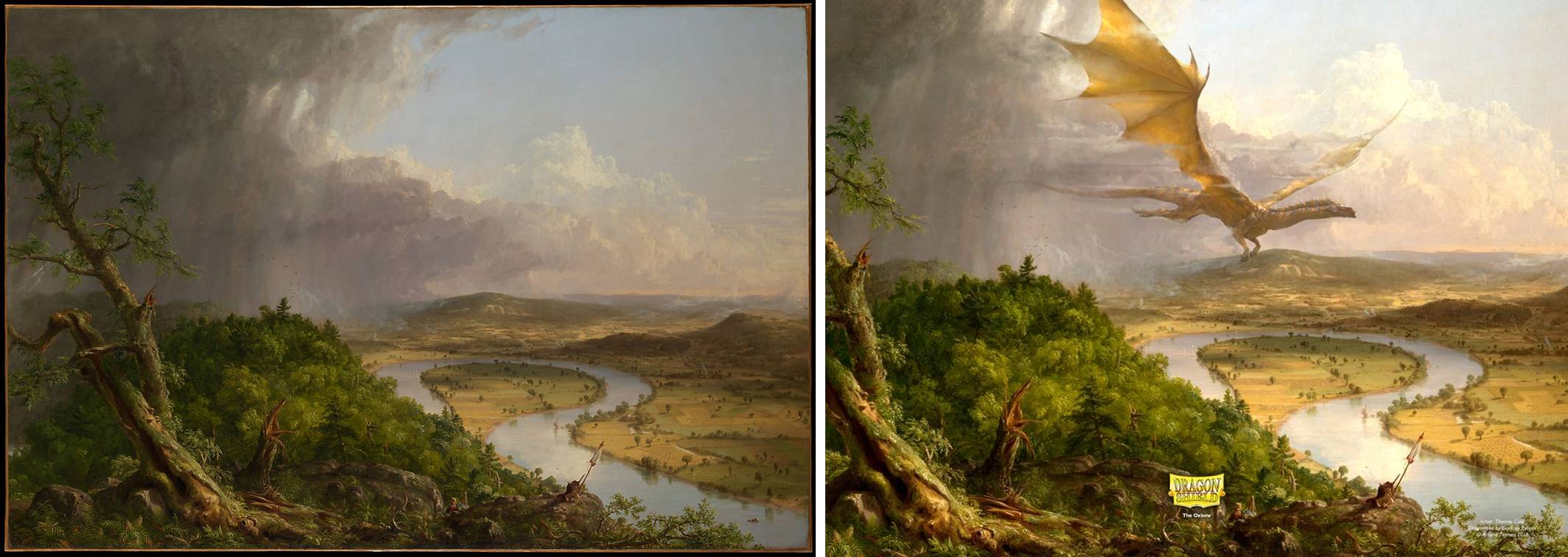
Back in 2019, Dragon Shield launched a set of sleeves that featured “dragonized” versions of famous artworks. I fell in love with them, and I wrote about them because these contemporary versions provide a great point of departure for learning about the original works these sleeves were drawn from.
Well, there is finally another set on store shelves, and these are dragonized versions of paintings you’ll almost certainly recognize:
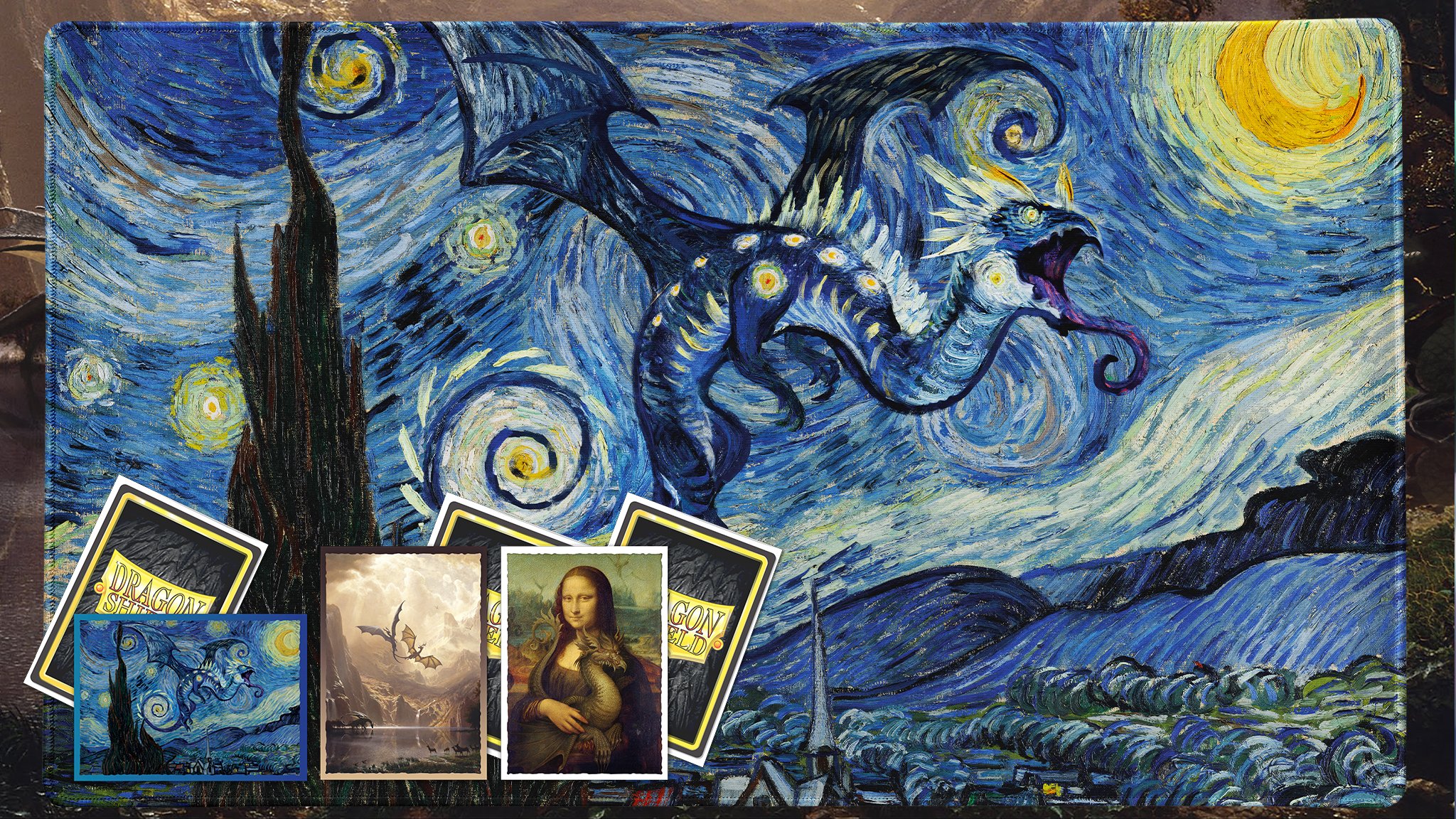
As I mentioned in the previous article, this article will not talk about copyright, derivative works, and the legal and ethical implications that come from creating one piece of art out of another; it’s just not what I do. But what we will talk about is some of the history behind these three works and artists, why they’re important, and the reasoning Dragon Shield chose these three in particular to Dragon-ize.
This is Dragon Shield Art Sleeves, Volume 2.
The Starry Night by Vincent van Gogh
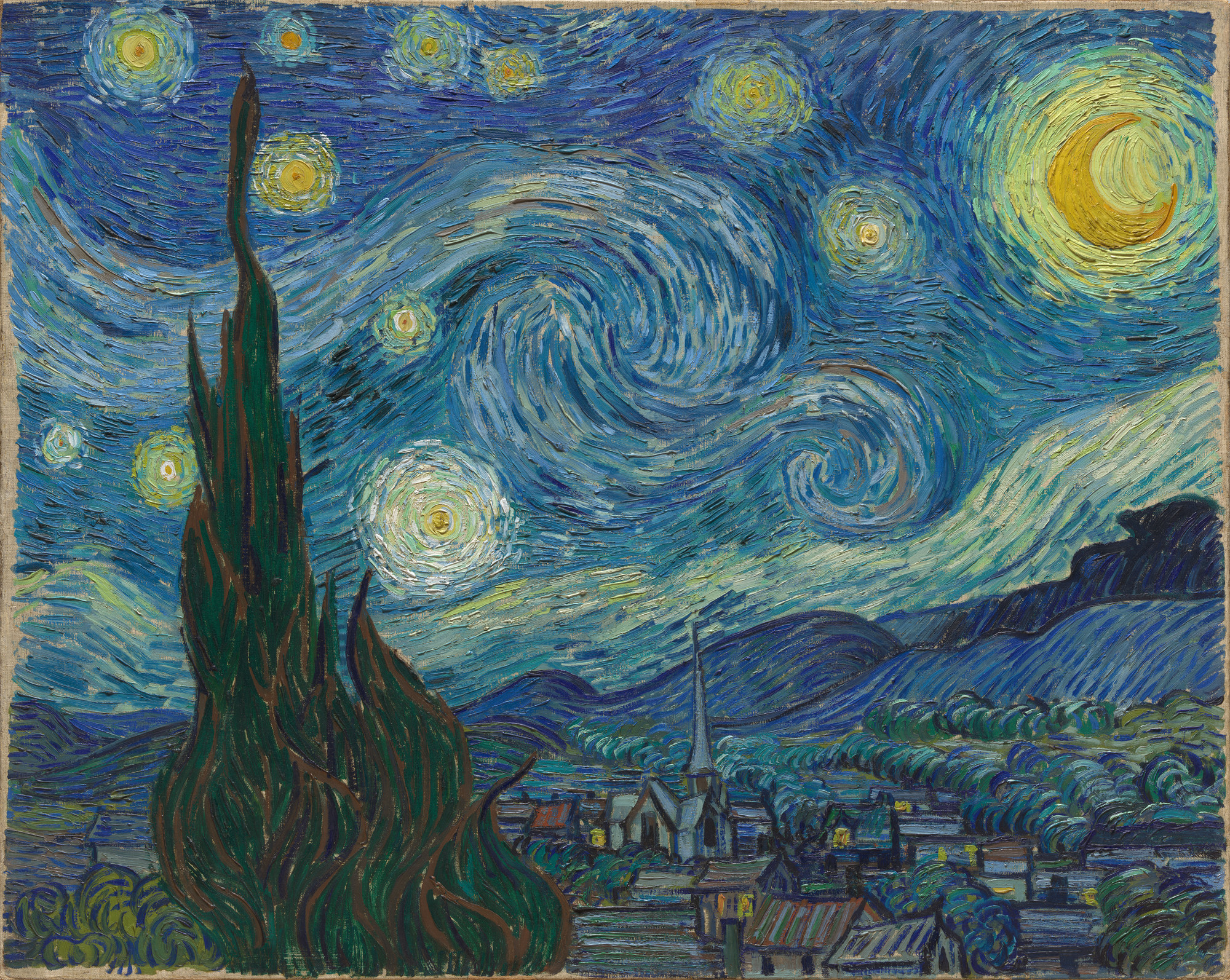
The Starry Night (Saint Rémy, June 1889) by Vincent van Gogh, oil on canvas, 29” x 36 1/4″ (73.7 x 92.1 cm), collection of the Museum of Modern Art (MoMA), New York, acquired through the Lillie P. Bliss Bequest (by exchange)
One of the most recognizable works in Western art (and perhaps only second to our next work) is Starry Night by Vincent van Gogh. Painted in 1889 while van Gogh underwent a year-long asylum stay due to mental illness, the work was rendered as seen through his window during the day, although the painting depicts the scene at night. It’s the most famous of several similar views, and has been the subject of countless books, essays, and videos.
Highly expressive with swirling thick brushstrokes and bright, bold colors, it’s a shining example of Post-Impressionism, the movement by Van Gogh was very much a part and best remembered. His work takes the conventions of Impressionism and amplifies them ten-fold, a commentary on both the world as the Movement saw it, and his unfortunate general state of dysfunction and delusion. It has been in the collection of the Museum of Modern Art in New York since 1941.
Dragon Shield artist Godfrey Escota has tried to capture this same sense of movement, only now those swirls act as a portal to bring a great dragon through to the forefront. This is also the first and only Dragonized artwork available as a playmat. I have one, and it’s one of the coolest in my collection; a contemporary derivation of a timeless classic.
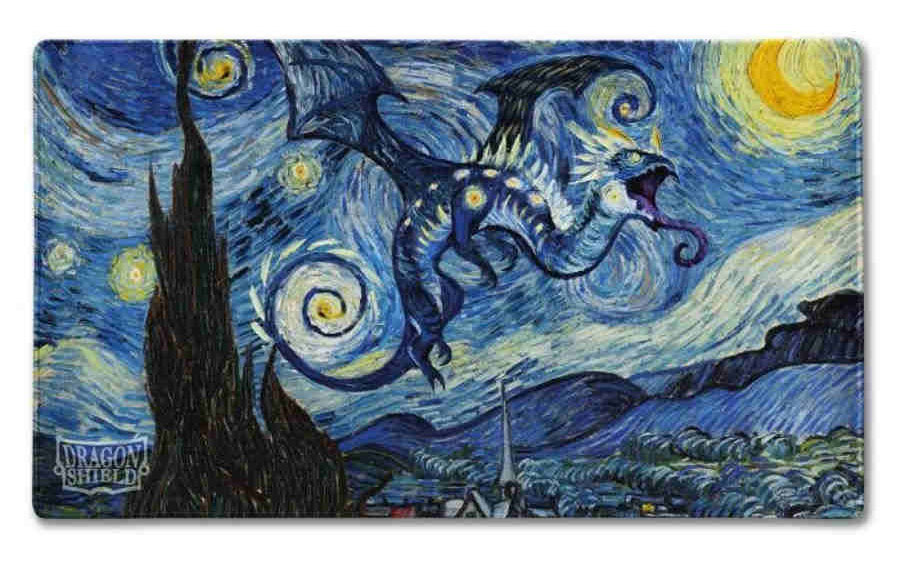
Dragonized Starry Night by Godfrey Escota. Digital
The Mona Lisa by Leonardo da Vinci
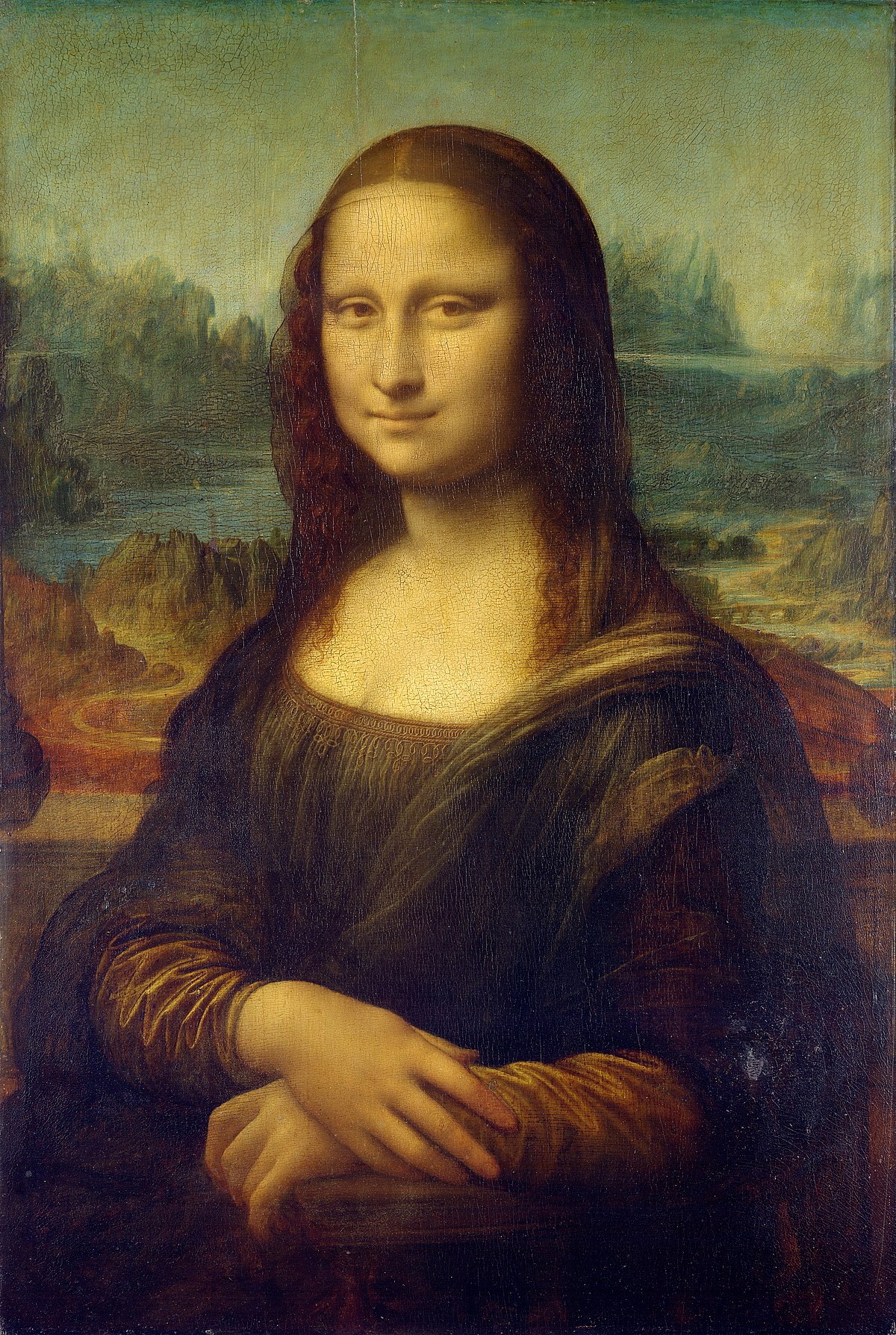
Mona Lisa [La Gioconda/ La Joconde] (Florence, 1503-1506, cont. 1517) by Leonardo da Vinci, oil on poplar panel, 30” x 21” (77 cm × 53 cm), collection of the Louvre, Paris, France.
“The best known, the most visited, the most written about, the most sung about, the most parodied work of art in the world.” — John Lichfield, The Independent, 2009
Indeed the Mona Lisa is perhaps the most recognizable work of art not only in the world, but in the history of the world. Painted during the first quarter of the 16th Century, it is one of the works most associated with the Italian Renaissance and the master known as Leonardo. The Mona Lisa has been on display at the Louvre since 1797, and thanks to the marvel of modern technology, you can get up close and personal with her via the Louvre’s website—absolutely dive into this link, and you can see a half millennium’s worth of history and sfumato in her pigmented cracks.
For this newest rendition, Escota has added a dragon drapery to this most famous lady. It’s another fine parody in a long line of characterizations of this Florentine gentlewoman, and one I expect to see a lot of at game tables around the world.
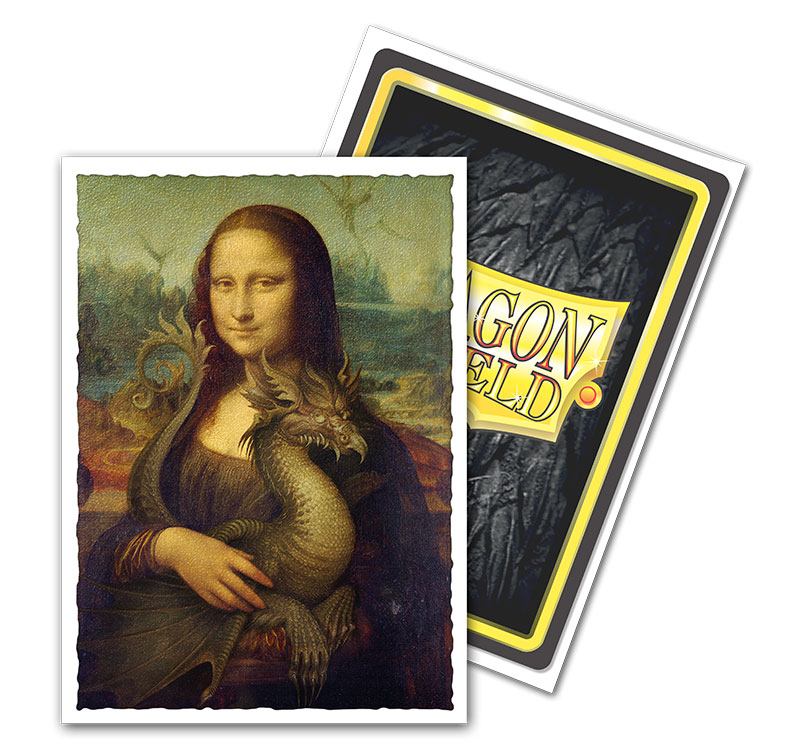
Dragonized Mona Lisa by Godfrey Escota. Digital
Among the Sierra Nevada Mountains by Albert Bierstadt
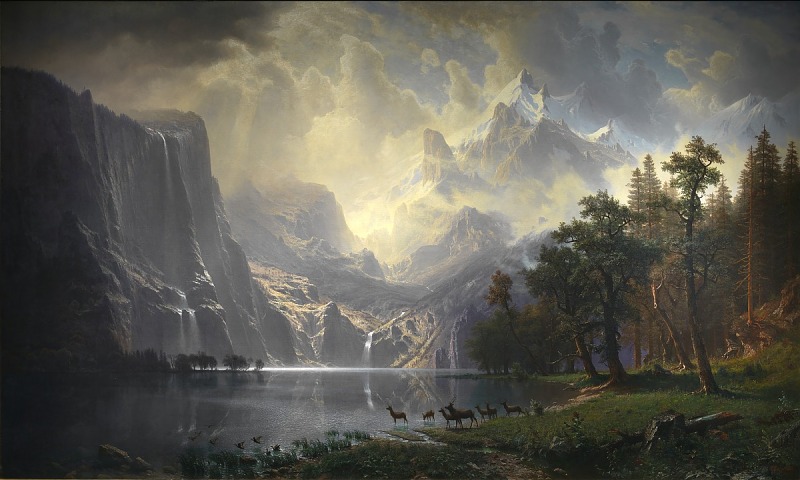
Among the Sierra Nevada Mountains (1868) by Albert Bierstadt, oil on canvas, 72” x 120 1⁄8” (183 x 305 cm), collection of the Smithsonian American Art Museum, Bequest of Helen Huntington Hull.
Albert Bierstadt was a German-American artist and a part of the second generation of Hudson River School painters. His body of work concentrated on the American West in the second half of the 19th Century, as the United States claimed lands and expanded west towards California. As the world watched new frontiers explored, Bierstadt and his contemporaries created massive romantic landscapes of these new natural and serene locations, to much popularity and fanfare in their time.
Bierstadt would create oil painted studies, the period equivalent of reference photography in this case, on his trips West, and then use these to create his much larger final works. This location was visited in 1863, but the full painting was not rendered until 1867-68 while Bierstadt was working in Rome, Italy. It was then exhibited throughout Europe: London, Paris, Moscow, and Saint Petersburg, before it was shipped to the United States and sold. The work is now on permanent exhibition at the Smithsonian Museum of American Art in Washington, DC.
The Hudson River School has long been an influence to Magic: the Gathering and fantasy artists in general, and this painting even influenced the recent Genesis Ultimatum by Jason Rainville from Ikoria: Lair of Behemoths; I wrote about this last year if you’d like to read further. Take a close look the next time you see sun peeking through clouds in the background of a Magic card; chances are that artist may have looked to Bierstadt, just as Robson Michel did in the dragonized version that appears on the sleeves.
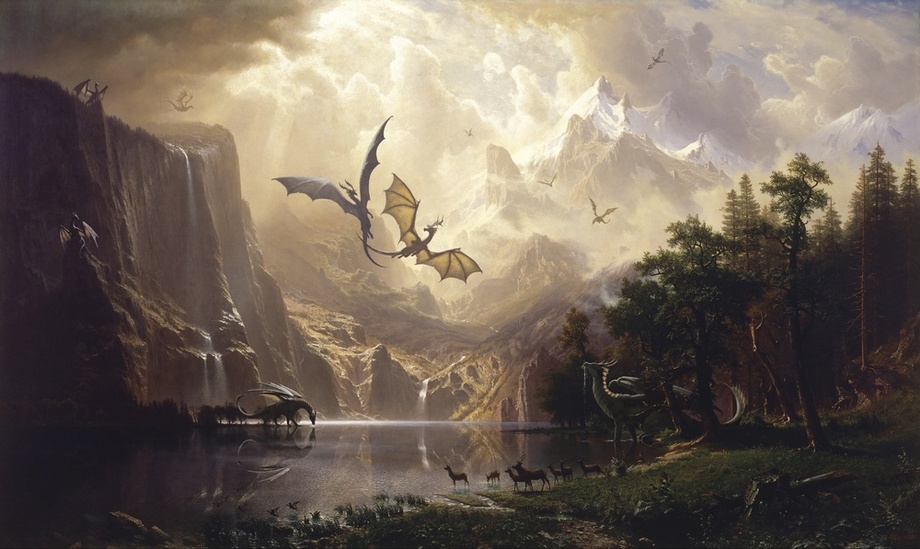
Dragons over Sierra Nevada Mountains by Robson Michel. Digital.
Wrapping Up
I hope you enjoyed this short art history lesson, and that Dragon Shield’s new sleeves were able to act as a vehicle of discovery for some of these historical masterworks. Dragon Shield has seemed to find a niche of uniqueness in these dragonized works of art. I for one hope they continue this series, not only so that I can keep sleeving my EDH decks in fabulous artworks, but so I can keep sharing some of the greatest artistic accomplishments of the modern world with you readers.
In fact, there’s another set of these coming our way this year, and they’ve let loose a spoiler on social media as a bit of a teaser.
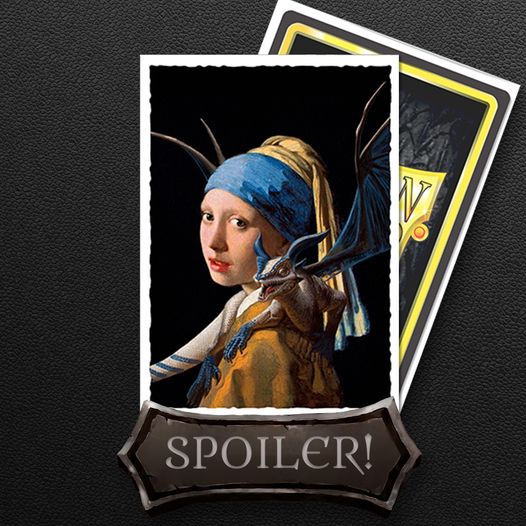
Yes, that’s The Girl with the Pearl Earring by Johannes Vermeer, with a little added flair to her shoulder, and she’s expected to land on LGS shelves in the second half of 2021.
Looking ahead, next time in the Mirror Gallery it’ll be the Modern Horizons 2 Grand Art Tour; I’m already well on my way with this article and there are some seriously incredible artworks, so make sure you tune back in for that.
Remember, to see original #mtgart and other #vorthos related things, follow me on Twitter. Feel free to ask questions or retweet to continue the conversation. Thanks and see you next time!
Donny Caltrider has been playing Magic since 2002 and collecting original Magic art since 2017. He has an M.A. in Museum Studies from Johns Hopkins University and enjoys telling stories about art, objects, and the intersection of fantasy with real-life. You can find him on Twitter talking about #mtgart, museums, and other #vorthos related goodness. Follow along and continue the conversation!

